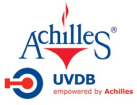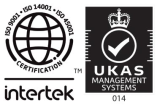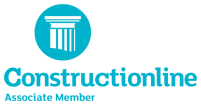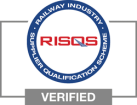Height Safety Certification Explained
Honeywell Height Safety Equipment
Height safety certification information for 'Honeywell' products (formerly Bacou Dalloz and then Sperian Protection).
All Honeywell height safety equipment is supplied with a user manual that contains an inspection record sheet.
To comply with the Working At Height Directive it is the legal responsibility of the purchaser / user to keep height safety equipment records up to date. The employer / user must ensure that the equipment is in good condition, fit for use, the user is competent and suitably trained, the equipment is maintained in accordance with the manufacturers records and that all equipment is thoroughly examined by a competent person at maximum interval of:
- 12 months for fall arrest equipment (non load bearing except when arresting a fall)
- 6 months for Man Riding equipment (load bearing equipment and PPE, eg rope access and winched access)
Maximum Periods
These are maximum periods and must be reduces dependant on your risk assessment and method statement; for example:
- Frequency of use
- Environmental conditions
- Use with chemicals
- Exposure to UV light
- Multi users (additional adjustment wear)
- Storage conditions
- Cleanliness
- User inspections etc (these are only suggestions)
Legally Required Information
All legally required information is contained on the product label, this information should be recorded elsewhere, (electronic or manual) we recommend that you record the:
- Description
- Manufacturer
- Part Number
- Date of manufacture
- Serial number
- Date of purchase
- Purchased from
- Date of first use
- Name of user
- Date of thorough examination
- Comments by person carrying out the thorough examination
- Next examination due date
- Signature, name and organisation of examiner
3M (SALA and Protecta) Height Safety Equipment
As stated in European Standard EN 365, Personal Protective Equipment (PPE) against fall from height must be inspected at least once every twelve months by a competent person who, in some cases, will involve sending the item back to a trained service agent, who will decide whether the equipment is suitable to be placed back into service. Depending upon the type and environment of work, inspection may be needed to be carried out more frequently than once per year, and inspection is always to be carried out inline with country or local requirements.
Textile products or products containing a Textile element
A textile product or element may lose its characteristics with time. This is especially true for products which are subjected to climate corrosion, sunlight deterioration, chemicals, mechanical contact, and dirt ingress. In these cases all products will undergo accelerated ageing.
General estimates of the lifespan of textile products are dependent in its use and environment, as well as it's correctly storage while not in use
- Up to a maximum 10 years from the date of manufacture.
- Used rarely: 6 to 8 years from the date of first use.
- Used regularly: up to 5 years from the date of first use.
- Very heavily and/or in aggressive areas: less than 1 year from the date of first use.
Mechanical products, Self Retracting Lifelines
For mechanical products that require mechanical servicing during inspection which allows thereplacement of components:
- No service life limit as long as the recommended servicing and repair is undertaken and documented by a Sala/Protecta trained competent person.
For mechanical products that can not be serviced during inspection so the internal mechanism can not be checked.
- Up to a maximum 10 years from the date of manufacture.
- If the product has a textile element for the lifeline or shock absorber, the rules of textile products should be followed.
Permanently Installed Fall Arrest Anchorage Systems
For permanent systems, such as horizontal or vertical cable systems:
- No service life limit providing that the recommended service schedule is up kept, and the maintenance is performed by a Sala/Protecta trained competent person.
The shuttle or sleeve used to connect to these systems:
- Must undergo an annual inspection in line with the whole system.
- No service life limit as long as the recommended servicing and repair is undertaken and documented by a Sala/Protecta trained competent person.
- If the product has a textile element for example shock absorber the rules of textile products should be followed.
Temporary Fall Arrest Anchorage Systems
For temporary anchorage systems, such as removable eyebolts and temporary horizontal cable systems
- No service life limit providing that the recommended service schedule is up kept, and the maintenance is performed by a Sala/Protecta trained competent person..
For temporary horizontal or vertical systems manufactured from webbing or rope.
- The rules of textile products should be followed.
- The travelling units for these systems are governed by the same rules as apply to the permanent systems.
For Vacuum Anchors:
- No service life limit providing that the recommended service schedule is up kept, and the maintenance is performed by a Sala/Protecta trained competent person.







